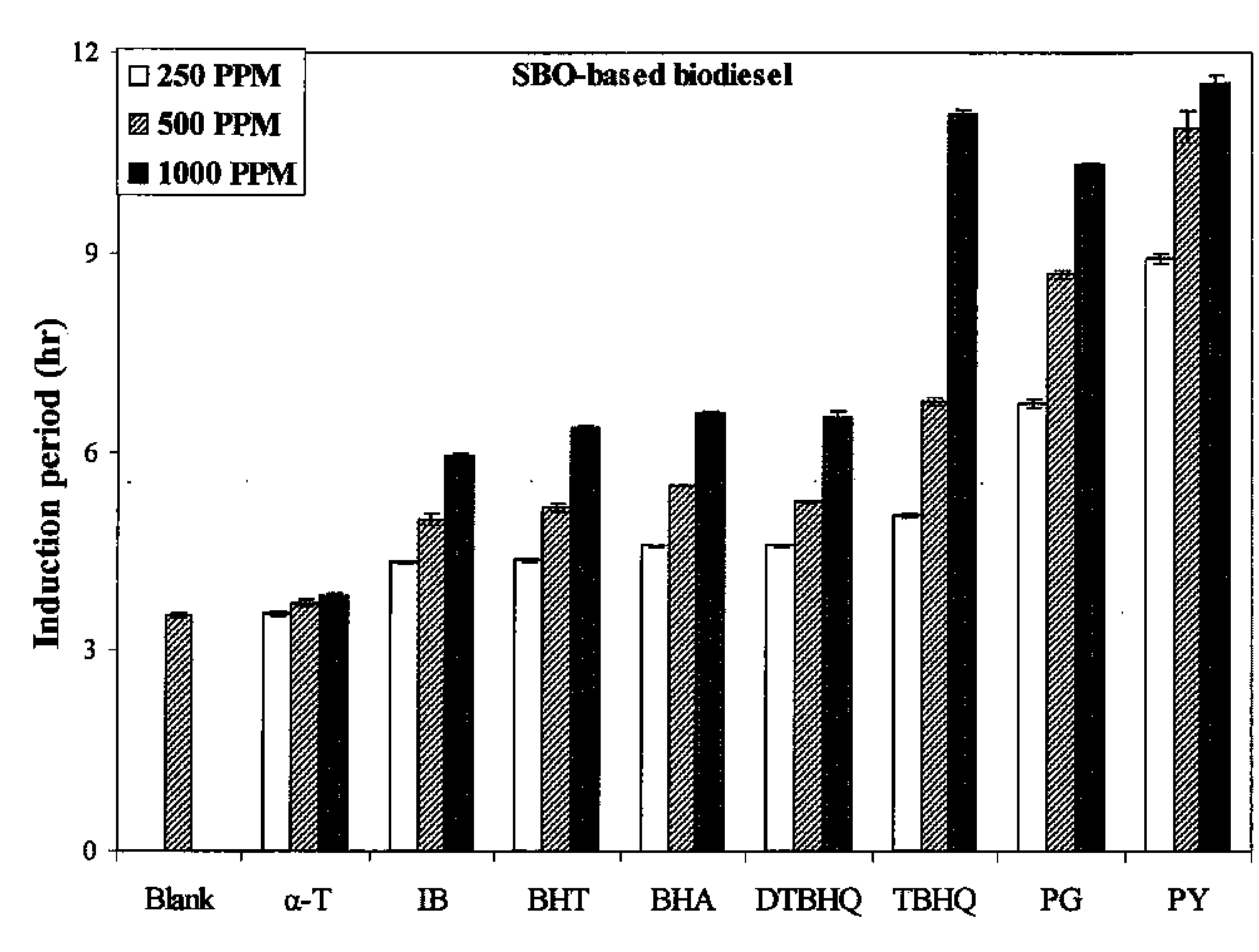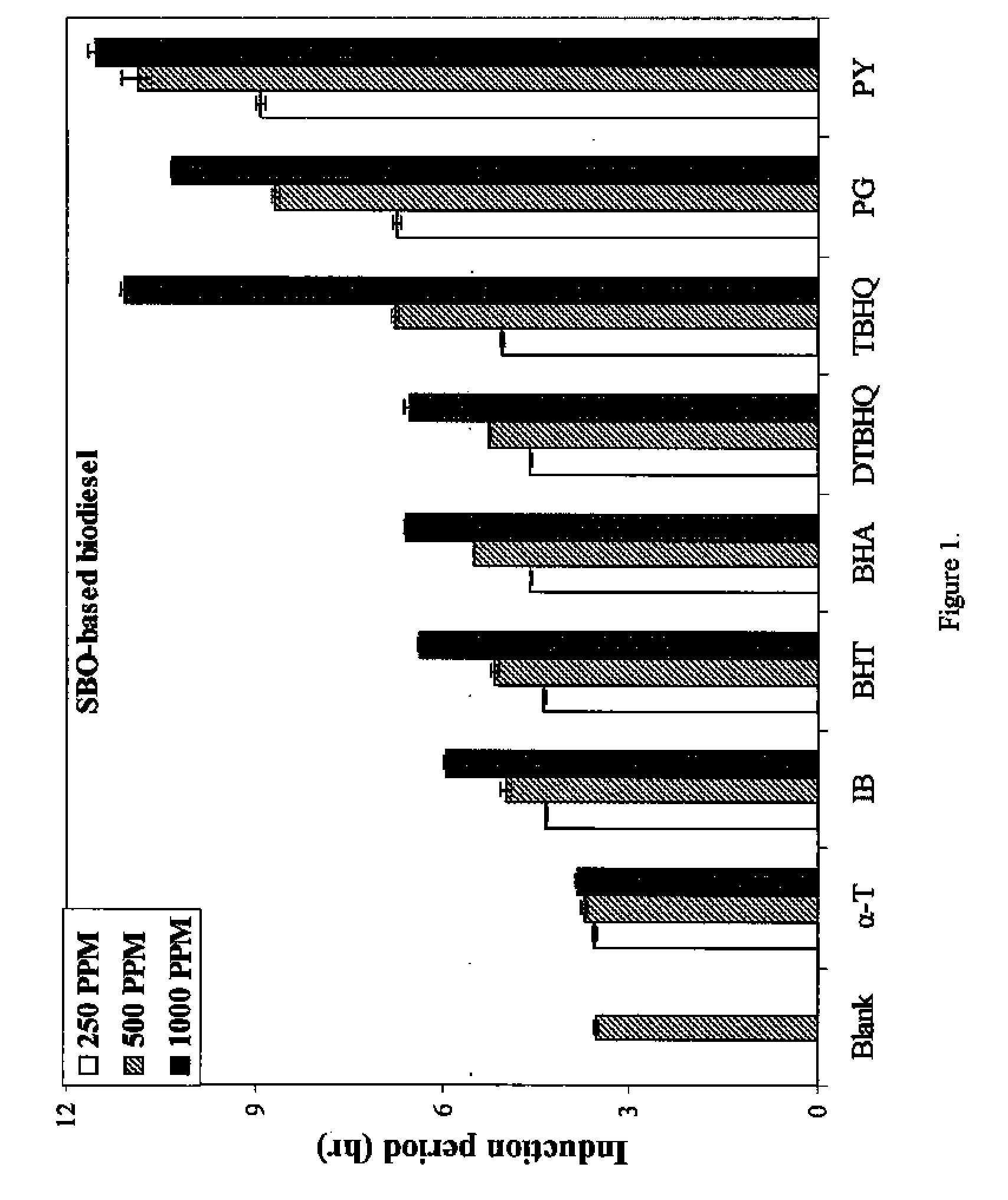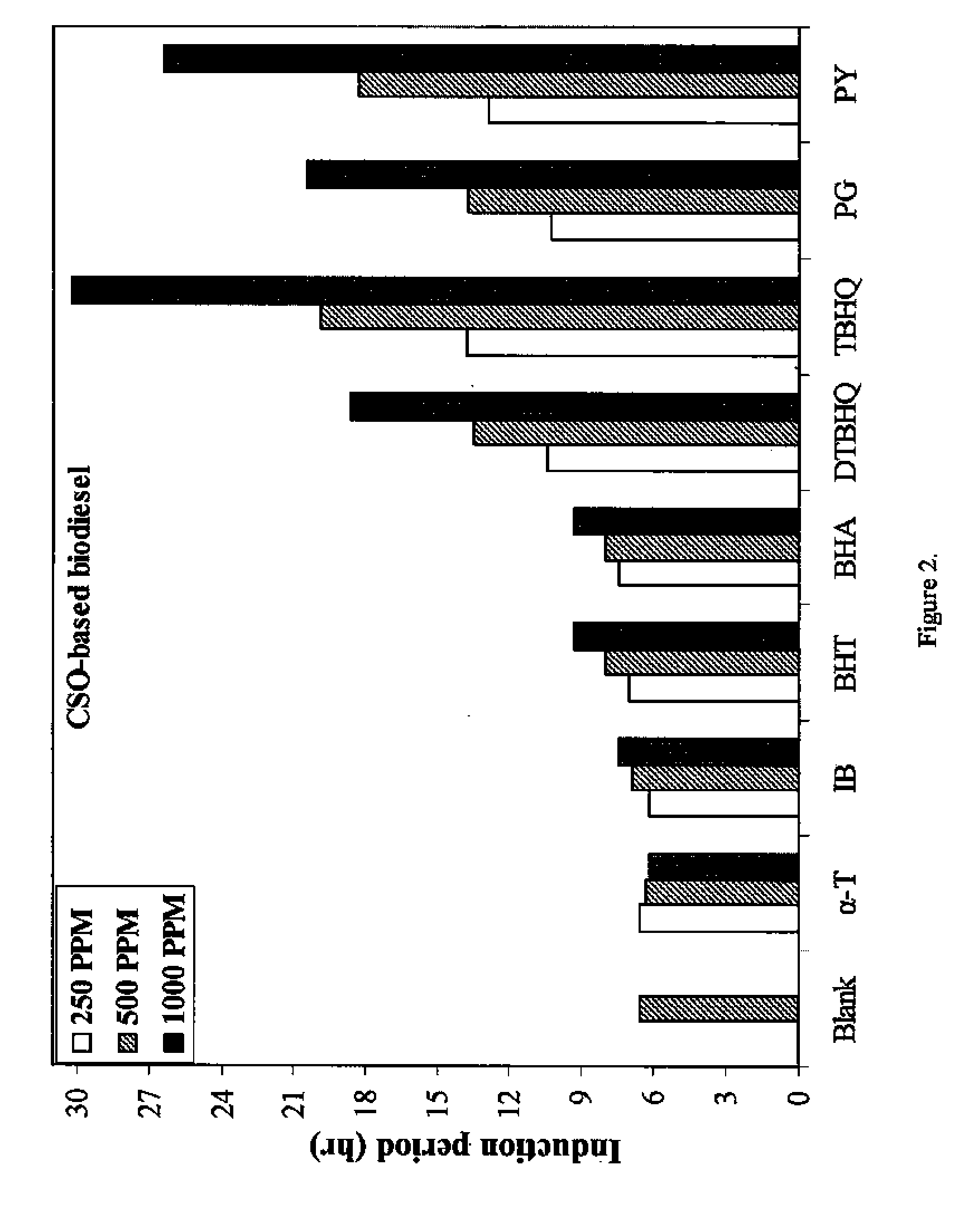Effect of natural and synthetic antioxidants on the oxidative stability of biodiesel
a biodiesel and antioxidant technology, applied in biofuels, biofuels, biofeedstocks, etc., can solve the problems of poor oxidative stability, biodiesel is very susceptible to oxidation, and the fusion of moving parts, so as to increase the stability factor and induction
- Summary
- Abstract
- Description
- Claims
- Application Information
AI Technical Summary
Benefits of technology
Problems solved by technology
Method used
Image
Examples
example 1
Characterization of Samples
[0039]SBO, DSBO, CSO, PF, YG were evaluated for viscosity, acid number, free glycerin, total glycerin, cloud point, pour point, coldfilter plugging point and induction period. Data are summarized in Table 1. On the whole, most of the values were within the limits given by ASTM D6751-07. YG-based biodiesel had an acid number above the ASTM standard. SBO- and CSO-based biodiesel met the limit of a 3-hour induction period; however, PF-, YG-, and DSBO-based biodiesel did not meet the oxidative stability specification. The IP of CSO-based biodiesel was the highest without added antioxidant among the five types of biodiesel.
TABLE 1ASTMASTMmethodspecificationSBODSBOCSOPFYGULSDViscosity,D 4451.9-6.04.3364.0504.2214.3864.5522.15440° C. (mm2 / s)Acid numberD 6640.5 max0.2150.1790.2620.2980.5150.005(mg KOH / g)Free glycerinD 65840.0200.00600.0010.0010.000—(mass %)Total glycerinD 65840.240.17700.1860.1430.016—(mass %)Cloud point (° C.)D 2500Report346713−25Pour point (° C....
example 2
Effect of Antioxidants on Oxidative Stability of SBO-Biodiesel
[0042]FIG. 1 shows the IP of SBO-based biodiesel as a function of the concentration of added antioxidant. The oxidative stability was measured as described above. Antioxidants were added to the SBO-based biodiesel in a concentration range between 250 and 1000 ppm. Generally, the IP of samples were observed to increase with the increasing antioxidant concentration. PY was found to be the most effective antioxidant in terms of increasing IP over the range of 250-1000 ppm, while α-T shows the smallest increase. PG was the second most effective antioxidant in the range of concentrations between 250 and 500 ppm, followed by TBHQ, however, TBHQ was more effective than PG at 1000 ppm. The addition of BHA, BHT, DTBHQ, and IB was found to increase IP, and their effects are very close to each other with BHA exhibiting the highest IP increase at concentrations near 1000 ppm.
[0043]Previous studies have shown that for soy based biodie...
example 3
Effect of Antioxidants on Oxidative Stability of CSO-Based Biodiesel
[0045]FIG. 2 shows that for CSO-based biodiesel, TBHQ gave the highest IP increase at 250-1000 ppm, followed by PY, PG, and DTBHQ. BHA and BHT had almost the same effectiveness with the CSO-based biodiesel. However, IB displayed no noticeable increase in oxidative stability at 250 ppm and 500 ppm, and only a slight increase at 1000 ppm. Compared to the SBO-based biodiesel, the effectiveness of antioxidants for CSO-based biodiesel was somewhat different, with TBHQ having the greatest effect on oxidative stability, reaching to 30.2 hours at 1000 ppm.
Effect of Antioxidants on Oxidative Stability of YG-Based Biodiesel
[0046]FIG. 3 shows that the untreated YG-based biodiesel sample did not reach the ASTM specification for B100 (2.25 hours vs. 3 hours). The effectiveness of antioxidants on the IP of YG-based biodiesel is very similar to SBO-based biodiesel: PY produced the best improvement. PG was the second most effective...
PUM
| Property | Measurement | Unit |
|---|---|---|
| length | aaaaa | aaaaa |
| flow rate | aaaaa | aaaaa |
| temperature | aaaaa | aaaaa |
Abstract
Description
Claims
Application Information
 Login to View More
Login to View More - R&D
- Intellectual Property
- Life Sciences
- Materials
- Tech Scout
- Unparalleled Data Quality
- Higher Quality Content
- 60% Fewer Hallucinations
Browse by: Latest US Patents, China's latest patents, Technical Efficacy Thesaurus, Application Domain, Technology Topic, Popular Technical Reports.
© 2025 PatSnap. All rights reserved.Legal|Privacy policy|Modern Slavery Act Transparency Statement|Sitemap|About US| Contact US: help@patsnap.com



